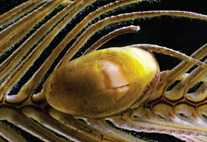Abstract
An extensive phylogenetic analysis and genus-level taxonomic revision of Paranoplocephala Lühe, 1910-like cestodes (Cyclophyllidea, Anoplocephalidae) are presented. The phylogenetic analysis is based on DNA sequences of two partial mitochondrial genes, i.e. cytochrome c oxidase subunit 1 (cox1) and NADH dehydrogenase subunit 1 (nad1), and includes 51 cestode isolates. The revision concerns all 34 Paranoplocephala-like species considered valid, of which 21 species could be included in the molecular phylogenetic analysis. Based on the phylogenetic relationships and main morphological features, with emphasis on the structure of the scolex, suckers and neck, length of the vagina (relative to the cirrus sac) and distribution of testes, 12 new genera are proposed for cestodes traditionally assigned to Paranoplocephala s. l. This results in 23 new combinations. The new genera are: Gulyaevia n. g., Chionocestus n. g., Microticola n. g., Beringitaenia n. g., Arctocestus n. g., Rauschoides n. g., Eurotaenia n. g., Douthittia n. g., Lemminia n. g., Tenoraia n. g., Rodentocestus n. g. and Cookiella n. g. In addition, Paranoplocephala (s. s.) and Parandrya Gulyaev & Chechulin, 1996 are redescribed; the latter genus is considered valid, although it has been earlier synonymized with Paranoplocephala. A new species (Beringitaenia nanushukensis n. sp.) from Microtus miurus is described. Based on the DNA sequence data, several additional lineages probably representing independent species are identified, but not described as new taxa because of lack of good-quality specimens or absence of reliable morphological differences. The study also presents the first evidence for the phylogenetic position of the monotypic genus Gallegoides Tenora & Mas-Coma, 1978 based on DNA sequence data. A key for the Paranoplocephala-like genera is presented. The patterns of diversity and zoogeography of cestodes representing the “arvicoline clade” (72 species) are complex, involving mechanisms of dispersal, geographic colonization and host switching linking faunas across Eurasia and North America.

